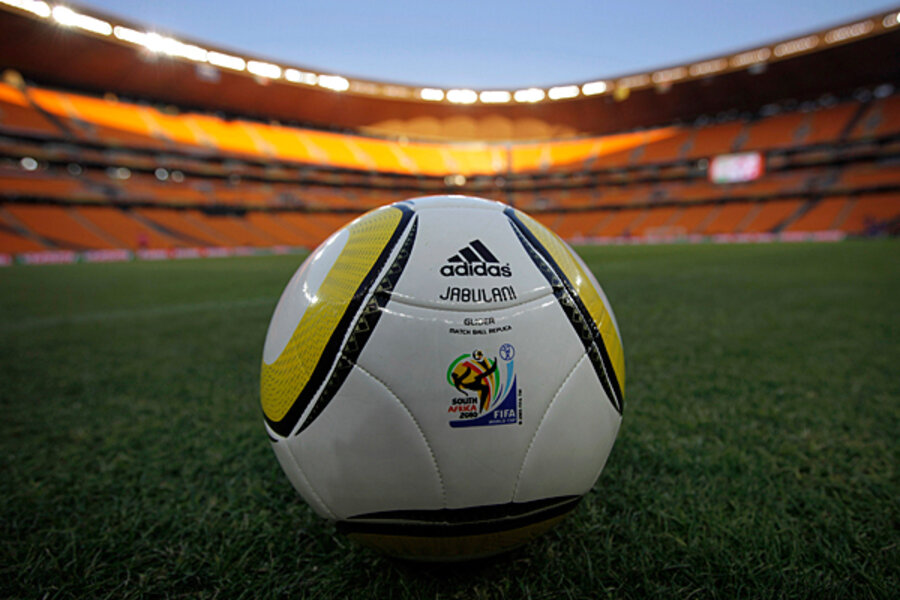World Cup 2010: Is the Jabulani ball bad for the World Cup?
Loading...
| Johannesburg, South Africa
It is becoming a World Cup tradition.
Each tournament Adidas announces its new ball is faster, rounder, and curls more. And each tournament the world’s best goalkeepers, who rarely appreciate anything that makes their job harder, complain about it.
This time though the row about the ball – and not just the ball itself – has taken off more than usual.
IN PICTURES: 10 World Cup players to watch
The Adidas Jabulani, which roughly translates as “rejoice” in Zulu, is the official ball of the 2010 World Cup. But the sphere is emerging as the second-most talked about aspect of this tournament (the first, naturally, being the vuvuzelas).
Not only has it been blamed by goalkeepers for causing embarrassing moments, it has also been lambasted by forwards who have found their long shots ballooning over the bar and by wingers whose crosses have failed to find their man.
“This ball is the worst ball that I’ve seen in my life,” said England coach Fabio Capello. “For the players it's terrible – particularly for the keepers because it's impossible to judge the trajectory. It's good when you play short passes but when you try to switch the ball with long passes it's really difficult to understand the trajectory. Sometimes it is impossible to control.”
Nigeria’s Vincent Enyeama, so impressive against Argentina in his side’s opening match, blamed the Jabulani for his mistake in the Super Eagles’s match with Greece Thursday.
He spilled a long range effort, allowing Vassillis Torosidis to score. “It was the ball, not me. It moved at the last minute, but it is the ball we have been given and we have to play with it.”
A who’s who of world-class goalkeepers, including Spain’s Iker Casillas, Italy’s Gianluigi Buffon, and Julio Cesar of Brazil, have also laid into the design of the Jabulani, which some have likened to a “beach ball”.
But unlike in previous tournaments, it is not just the goalkeepers who are complaining – this time around strikers have been equally scathing. FIFA and Adidas expected the new ball to lead to an increase in goals. Instead it has had the opposite effect as strikers struggle to work out how to get the best out of a ball that moves through the air quicker and less predictably than the those used in European leagues.
One British paper reported that some players are calling it the Jumanji ball, after the 1995 Robin William's film, due to its capricious flight path.
The opening matches have produced the lowest number of goals in World Cup history. Shot accuracy is just 33 percent, compared to at least 40 percent for the three most recent World Cups.
Adidas has been producing specially-made match balls for World Cups since 1970, when the Telstar was introduced for the tournament in Mexico. Every four years they bring out a new model, as well as providing different designs for European Championships and the Africa Cup of Nations. The reason, though Adidas would deny it, is money. The official ball is on sale here in South Africa for 1500 Rand ($200).
Not every team is at a disadvantage though. For the past year, the Jabulani has been used in the German Bundesliga, Germany's premier professional soccer league. And so far the most convincing performance of the World Cup came from Germany in their 4-0 demolition of Australia. Well, at least until Germany lost today to Serbia.
IN PICTURES: 10 World Cup players to watch
RELATED STORIES:





